- Honda commits to its 2040 phaseout of gasoline engines, doubling its investment.
- Japanese automaker will vertically integrate EV production, moving aspects such as battery manufacture in-house.
- Seven new EVs to launch in North America before 2030.
Honda announced its 0 Series of electric cars back in January, using this year’s CES in Las Vegas to tease two new models. Now, CEO Toshihiro Mibe says the automaker will double investment in electrification despite signs that EV sales in the U.S. and Europe appear to have cooled off for the time being.
var adpushup = window.adpushup = window.adpushup || {que:[]};
adpushup.que.push(function() {
if (adpushup.config.platform !== “DESKTOP”){
adpushup.triggerAd(“4d84e4c9-9937-4f84-82c0-c94544ee6f2a”);
}
else{
adpushup.triggerAd(“6a782b01-facb-45f3-a88f-ddf1b1f97657”);
} });
The move is a strong statement of intent from Honda, which believes that EVs offer the most effective solution to the future of automobile and motorcycle applications. Their timeframe to go all-electric, with both battery and fuel-cell EVs, remains the same, with a 2040 deadline for small vehicles. However, Mibe hinted at the use of sustainable fuels for larger applications, such as aviation and marine.
More: Honda’s Wedge-Tastic Saloon Concept Hints At A 2026 Production EV
The main thrust of the investment, which will increase to 10 trillion yen ($65 billion) through 2031, is to reduce the cost of North American battery procurement by 20 percent and overall production costs by 35 percent. To do so, Honda says it will shift toward manufacturing batteries in-house.
var adpushup = window.adpushup = window.adpushup || {que:[]};
adpushup.que.push(function() {
if (adpushup.config.platform !== “DESKTOP”){
adpushup.triggerAd(“5646c171-cb6e-4e2c-8440-49013ca72758”);
}
else{
adpushup.triggerAd(“e7c4c913-3924-4b2d-9279-6c00984dd130”);
} });
While battery manufacturing is the biggest component, the company will also procure raw materials and extend its support to reuse and recycling to build a vertically integrated EV value chain. It also aims to bring software development in-house as well. Other advances to production will be Honda’s take on Tesla’s Gigacasting, which they’re referring to as Megacasting.
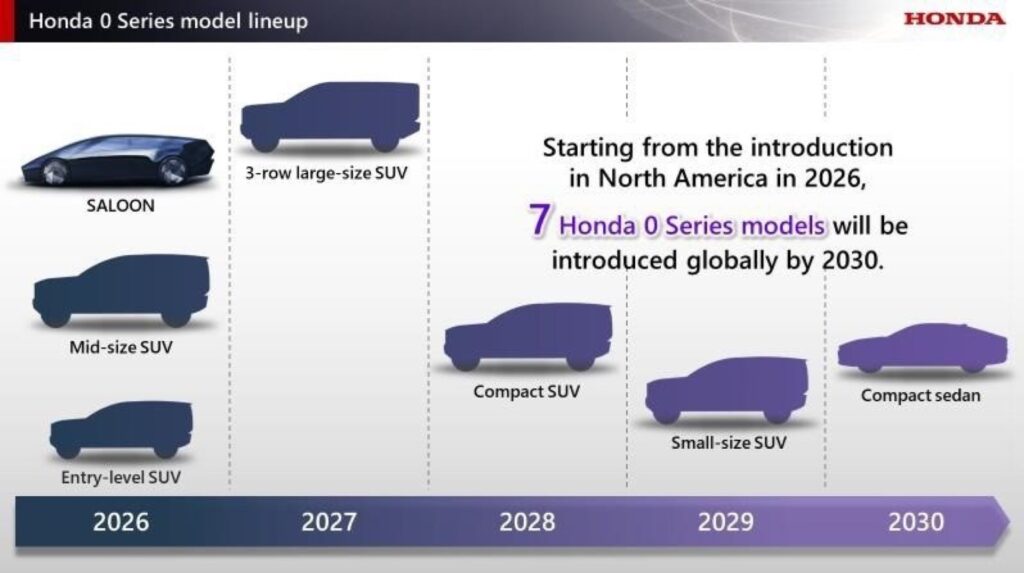
“We have to have this in-house, not only to ensure stable supply but to reduce cost and to evolve the battery performance,” Mibe said, according to AutoNews. “We need money to do this. We have the capability to secure enough cash, and that is why we announced this 10-trillion yen number today.”
And it’s by no means a small figure for Honda, either. In addition to being revised upwards by double the initial plan, the new EV investment of 10 trillion yen ($65 billion) is massive if you consider the company’s most recent annual income to be just 1.12 trillion yen ($7 billion).
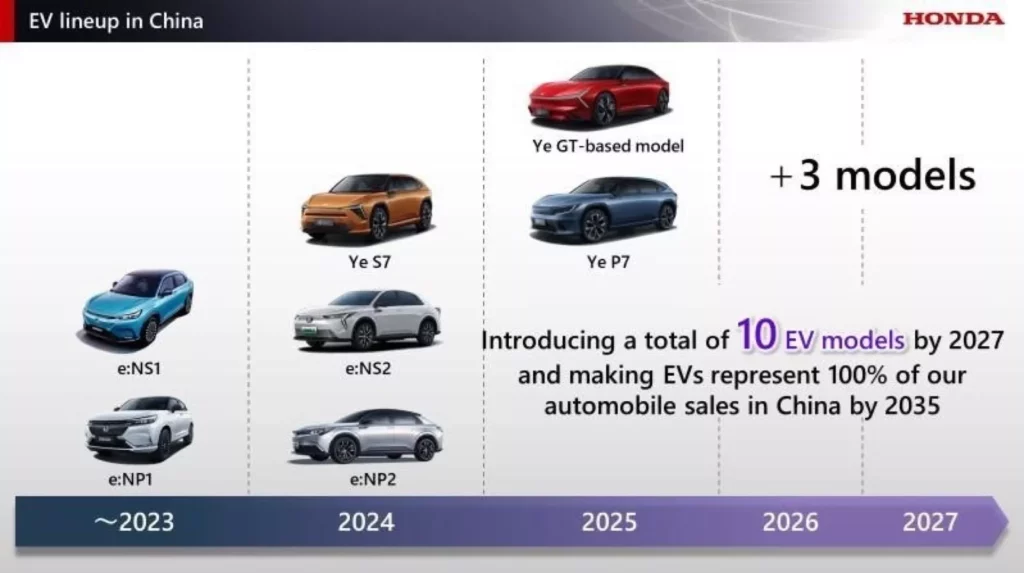
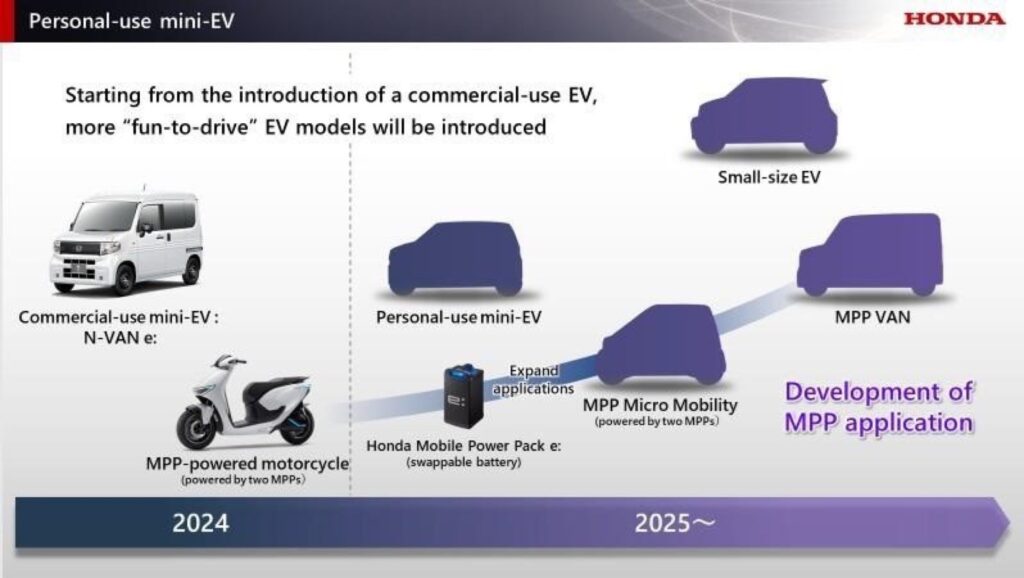
The move appears to be in direct response to Chinese EV makers, who have long had the upper hand in controlling costs. For example, BYD manufactures its batteries in-house and has tight control over its supply chain. This is just one reason why the company is able to offer its models cheaper than the competition.
window._taboola = window._taboola || [];
_taboola.push({
mode: ‘thumbnails-a-mid’,
container: ‘taboola-mid-article’,
placement: ‘Mid Article’,
target_type: ‘mix’
});
window._taboola = window._taboola || [];
_taboola.push({
mode: ‘thumbnails-oc-2×1’,
container: ‘taboola-mid-article-thumbnails-organic’,
placement: ‘Mid Article Thumbnails Organic’,
target_type: ‘mix’
});
See Also: Honda Takes On BYD With New Ye EV Brand, Shows SUVs And GT Concept
In the short term, Honda will still focus on its successful hybrids. The company will release two new versions of the e:HEV system and introduce e-AWD using motors from its current EVs. The company expects sales of hybrids to peak in 2029 or 2030, with gasoline motors being phased out towards 2040.
Nearly half of all new Hondas will be EVs or FCEVs by 2040
The medium- to long-term outlook is that Honda aims to have 40 percent of its offerings powered by EVs or FCEVs by the end of the decade. The 0 Series will facilitate this with seven models scheduled to be launched between now and 2030, with North America getting the first EV sedan in 2026. This will be followed by a mid-size SUV and an entry-level SUV, before 2027 brings a new three-row “large-size” EV SUV.
Each car in the 0 Series will weigh 220 lbs (100 kg) lighter than the manufacturer’s current range of EVs, and based on EPA testing, they will have more than 300 miles of range.
In addition, 10 new models will be rolled out in China by 2027, under the company’s newly-announced Ye Series. Small, likely Kei-category models, will be introduced in the Japanese domestic market, starting with the the “N-VAN e:” that will be available for purchase this fall, and an electric motorcycle with a swappable battery pack.
var adpushup = window.adpushup = window.adpushup || {que:[]};
adpushup.que.push(function() {
if (adpushup.config.platform !== “DESKTOP”){
adpushup.triggerAd(“e96f0476-8b1d-4bb8-b64c-33f9656987b2”);
}
else{
adpushup.triggerAd(“0f9edca9-aa84-4c07-8987-4cad23928c2d”);
} });
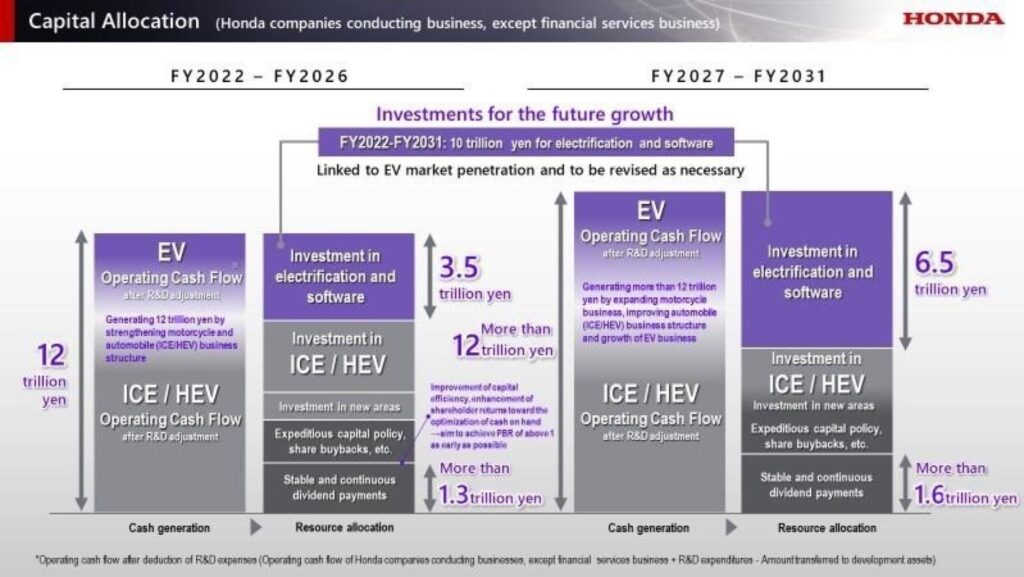
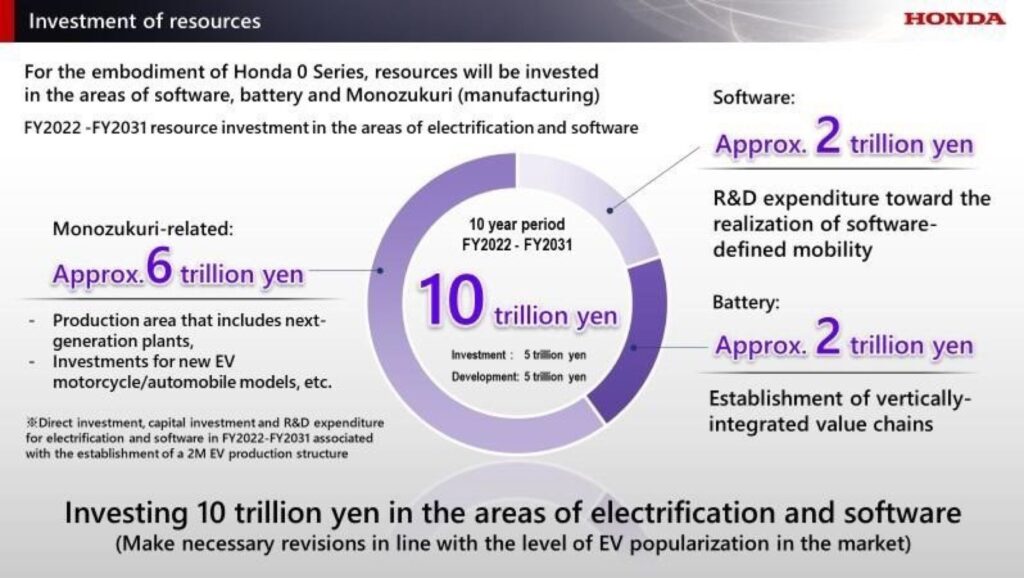
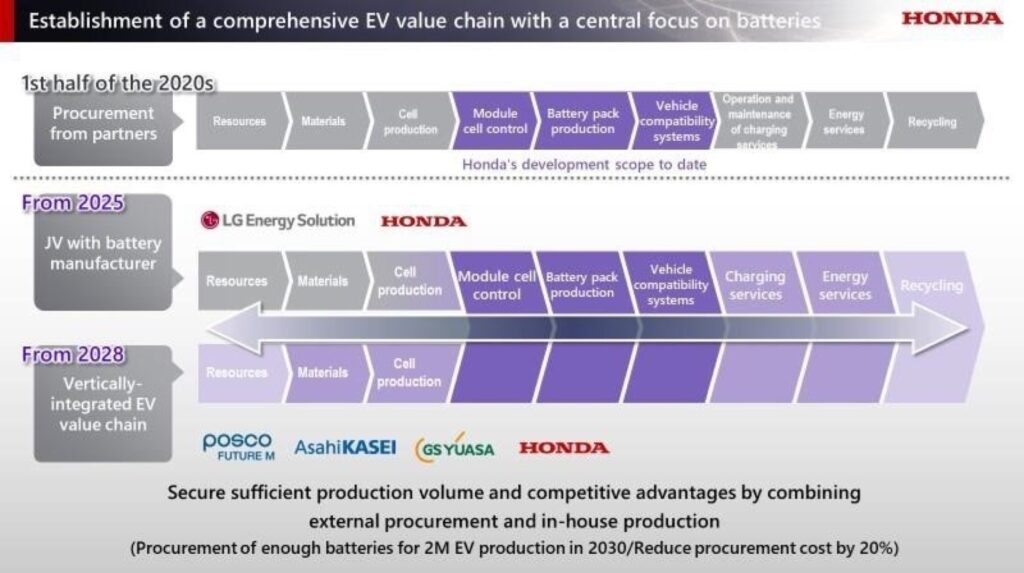
#Honda #Doubles #Investment #Billion #Plans #Models


